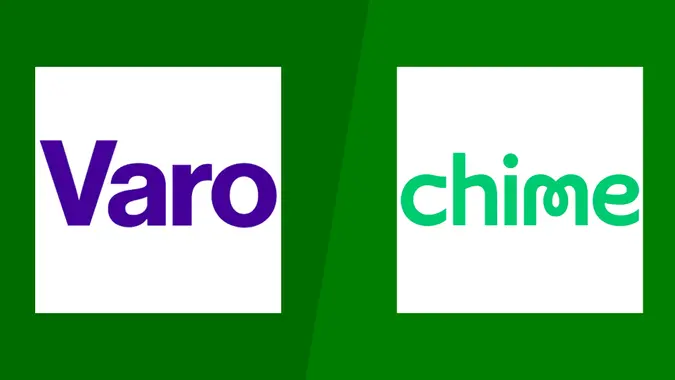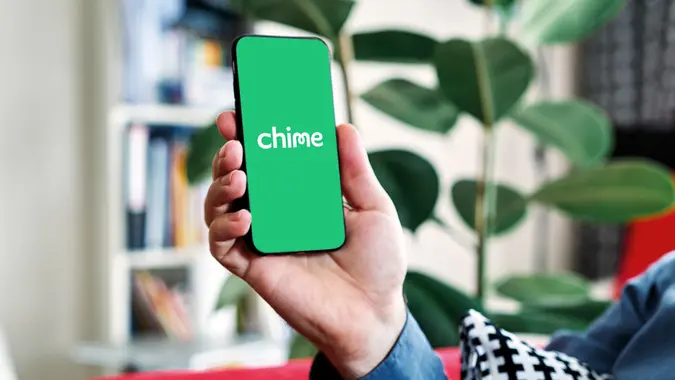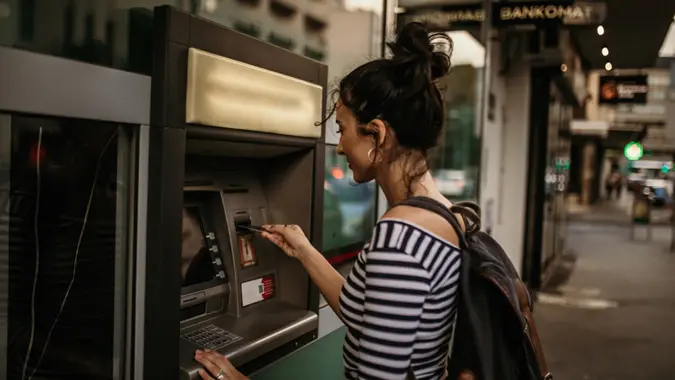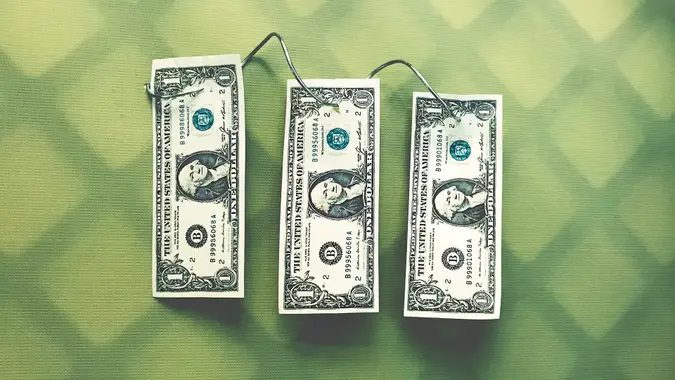Do Not Try This Social Media Money Hack — It’s Fraud

Commitment to Our Readers
GOBankingRates' editorial team is committed to bringing you unbiased reviews and information. We use data-driven methodologies to evaluate financial products and services - our reviews and ratings are not influenced by advertisers. You can read more about our editorial guidelines and our products and services review methodology.

20 Years
Helping You Live Richer

Reviewed
by Experts

Trusted by
Millions of Readers
There is no such thing as free money, but some people online had to learn that lesson the hard way. A viral trend that offered a hack for “free money” has turned out to be nothing more than check fraud. TikTok users spread the word about a glitch in Chase Bank ATMs, one that would provide them more money than they actually had in their accounts.
Dubbed online as the “infinite money glitch,” the scam involved people depositing a fake check into their accounts at a Chase ATM. Typically, the amount being deposited was a large sum of money, a number that would eventually be flagged in the banking system, bouncing the check altogether. However, scammers exploited a processing delay that Chase uses to clear checks. Right after making the deposit, the ATM user would withdraw a smaller amount than deposited, yet it was substantially more than they had access to in their checking or savings.
This kind of check fraud can also be referred to as “check kiting,” according to Cornell Law, and as many scammers have discovered is actually illegal. Chase took action against the fraudsters and alerted their customers that the so-called “hack” was really just a viral hoax and a crime.
Check Fraud Has Been on the Rise in America
Even though the platforms for the Chase ATM glitch were TikTok and other social media sites, check fraud feels like it’s a crime of a bygone era. After all, when was the last time you actually wrote a personal check? While less common these days, checks are finding new ways to be used by criminals all the time as money scams continue to increase and evolve.
According to the Financial Crimes Enforcement Network (FinCEN), there has been a national surge in check fraud over the last few years, making it “the largest source of illicit proceeds in the United States.” While much of the check fraud the FinCEN investigates involves the U.S. postal service, along with other mail or delivery services, new ones like the Chase ATM glitch are popping up with more frequency. Because the glitch went viral online, more people likely participated in the illegal act than usual by being influenced by the prospect of free money.
Check fraud can be classified as a misdemeanor or a felony, depending on the circumstances and how much money was defrauded in the act. States tend to prosecute check fraud above $500 as a felony, with anything below that amount usually being charged as a misdemeanor, noted SQN Banking Systems. However, that does not include the potential fines, fees, and restitutional costs that many of the guilty perpetrators are forced to pay in addition.
What Happened To Those Who Participated in the ATM Scam?
A Chase spokesperson told Fortune that once the bank became aware of the scam’s online spread, it quickly took steps to warn users and pursue legal action. JPMorgan Chase has filed multiple lawsuits in Los Angeles, Houston, and Miami against individuals and businesses accused of stealing more than $661,000 through the scheme.
In one case, a Houston man allegedly withdrew most of a $335,000 fake check over two days and still owed Chase nearly $291,000, according to NewsNation. Chase said it plans to continue investigating and prosecuting all related incidents.
More From GOBankingRates
 Written by
Written by  Edited by
Edited by 

























